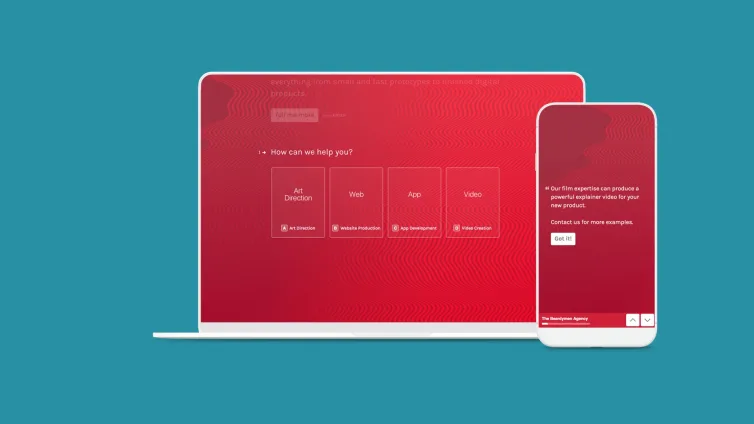Today’s consumers are exposed to tens, hundreds, even thousands of marketing messages per day. Their attention spans are only getting shorter, and their dollars are only becoming more valuable.
In a culture full of marketing noise, brands need to make their consumer value known pretty quickly. One way to do this is through marketing personalization. In fact, organizations that employ data-driven personalization see five to eight times the ROI on their marketing spend.
Zero-party data (ZPD) is the future of marketing personalization. And if you haven’t already noticed—the future is here. If you’re not currently collecting ZPD, you should start soon. Immediately, even. And once you've finished reading this, you’ll feel a lot more confident doing so.
Discover the differences between ZPD and other types of data, why collecting ZPD can be frustrating, and how to gain insights from the ZPD you collect (hint: AI is involved!).
Latest posts on Opinions & Expertise
Is zero-party data the same as other types of data?
The primary difference between zero-, first-, second-, and third-party data is how it’s collected and along with that, the degree of trust you can place in the data itself. At the basic level, you can get the same information from each type of data—but ZPD comes directly from the source, so it’s much more reliable. Here’s an example of how a marketer would use each data collection approach to obtain some basic personal information like a customer’s name and location:
Zero-party data approach: Using a form, survey, or quiz to gather the information directly from your audience. You would directly ask the customer.
First-party data approach: A customer visits your site and places an order. That order form contains their first name and address.
Second-party data approach: Basically, you buy someone else’s first-party data from a business partner.
Third-party data approach: Purchasing the information from a consumer intelligence partner—who has no direct relationship with the customer—who’ve collected this information from other websites.
Often, the data you get is the same, but the retrieval methods are definitely not created equal. There’s a reason Firefox and Safari have already gotten rid of third-party cookies, and they’re on their way out of Chrome: they infringe on user privacy rights.
And since you collect ZPD from your customers directly, you know it'll be quality data. It’s collected from your exact audience, not a “lookalike” audience. So you’ll be able to apply the information to your marketing personalization efforts confidently.
Why is collecting zero-party data so frustrating?
ZPD may not always be 100% objective and, therefore, not always 100% accurate. It’s completely dependent on real people’s input—and people lie sometimes.
You do, however, have to consider the questions you’re asking to gather reliable data. The data collected from deeply personal questions is going to be much different from data collected by asking about a user’s hair type or favorite productivity software. So, unless it makes sense for your brand to ask questions with strong psychological implications, your zero-party data is likely accurate.
ZPD collection can be frustrating, sure—but the benefits certainly outweigh the drawbacks. Here are some pros and cons of collecting zero-party data:
ZPD CONS:
Customers may not be willing to provide it due to perceived privacy concerns
You may not collect enough due to perceived privacy concerns
Can be difficult to manage due to issues like volume and data use consent
Can be unstructured due to inconsistent formats
Can be difficult to analyze due to variety of information and under-represented customer base
ZPD PROS:
Highly relevant
Reliable
Safe for customers; doesn’t violate privacy
Helps companies build trust with customers
Transparent: user has to opt in
Provides hyper-targeted insights
Most beneficial type of data for personalization
More important than ever due to California Consumer Privacy Act (CCPA) and General Data
Protection Regulation (GDPR) laws and the imminent extinction of third-party cookies
The biggest challenge of ZPD is how to clean and analyze it once you’ve collected it. Due to the unstructured nature of ZPD collection methods, it can be difficult to pull useful insights from the response data, especially if you have a smaller marketing team.
The formatting on forms and surveys or other ZPD collection tools may not always be consistent. So gleaning actionable insights from them may require more time or person-power or tools—and a bigger budget.
But there are ways to make this easier. And using AI is one of them.
Is there an easy way to get zero-party data insights?
The easiest way to parse collected ZPD is by using AI. AI can help analyze data through the following techniques:
Natural language processing (NLP): Can help you develop insights from unstructured data
Machine learning: Can help you extract patterns and make customer predictions
Deep learning: Can help with things like analyzing time and image recognition
Since AI looks for patterns in large datasets, it can help you comb through a lot more data a lot faster. Through in-depth analysis, AI can help you discover marketing insights much more efficiently.
So, what can AI do for my zero-party data?
AI can help you determine things like whether respondents in a specific demographic group are more likely to buy your products or services. You can also put AI to work by asking it to generate summaries of its findings. You’ll be able to make inferences about your customers by reading a description rather than studying rows and columns in a spreadsheet.
A few other things AI can do with your ZPD:
Predict customer behaviors
Categorize customers based on psychographic information like personality traits and interests
Segment customers who engage with particular brand events, like campaigns and sales
Identify customers who may be interested in upgrades or additional products
Classify customer sentiment and identify key phrases
When 87% of marketers believe data is their company’s most underutilized asset, it’s crucial to your strategy to find ways to put data to work for you. And if you’re taking the time and making the effort to gather data respectfully and directly from your customers, it’s worth it to make sure you’re actually able to do something with it.
Make zero-party data collection simple
Although there are certainly challenges when it comes to collecting, cleaning, analyzing, and maintaining ZPD, AI is making this somewhat tedious task more manageable.
And as important as it is to analyze and gather actionable insights from ZPD, its collection methods are just as—if not more—important. You can’t collect useful data if you’re not asking the right questions in the right format.
Luckily, tools like Typeform make conversational form, survey, and quiz creation easy. And since around 40% of Typeform’s roadmap is infused with AI, it makes marketing personalization at scale a lot less daunting.
Ready to see what ZPD can do for your business? Sign up for free today.







